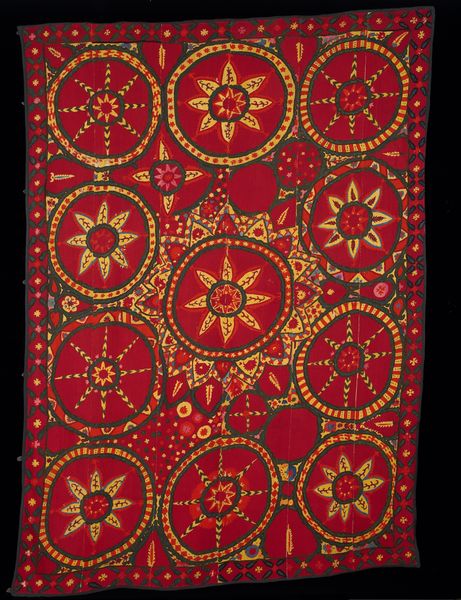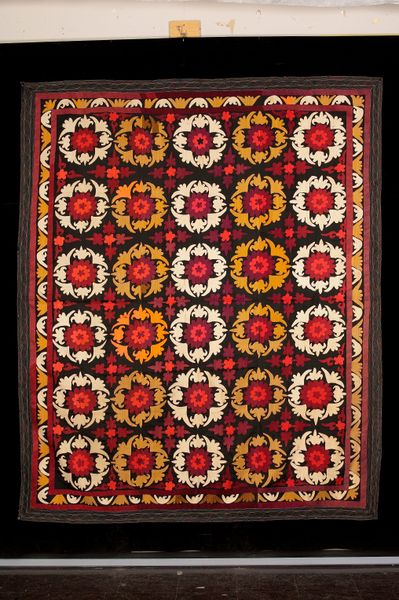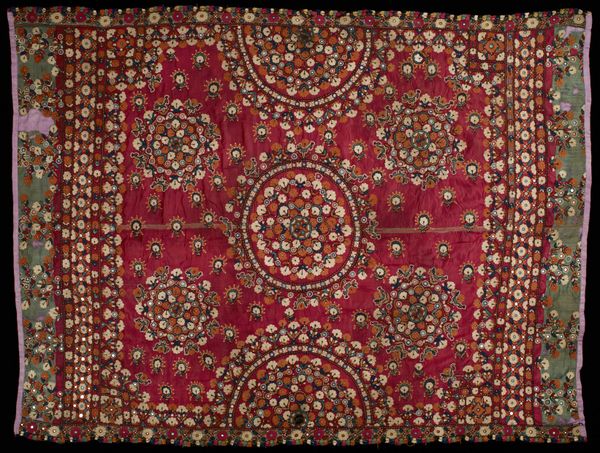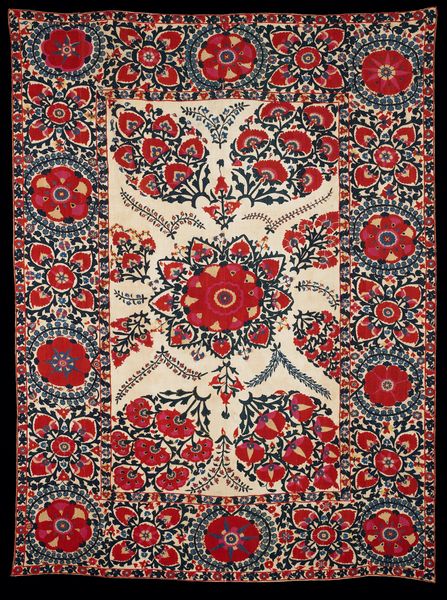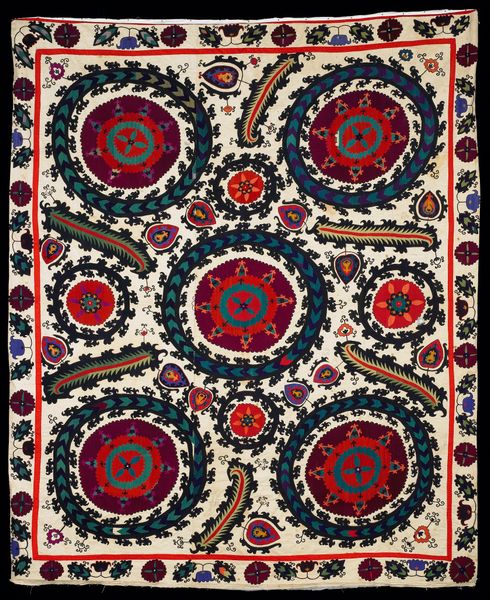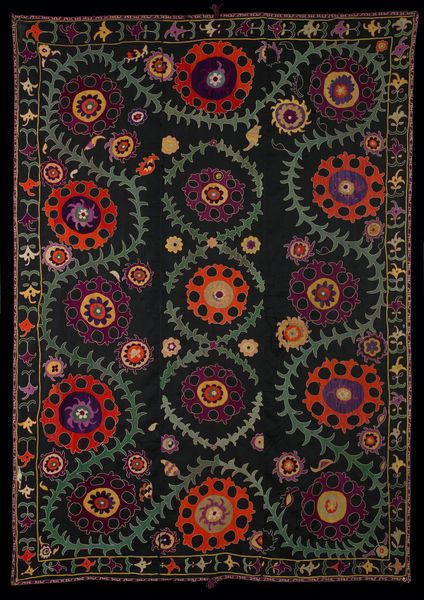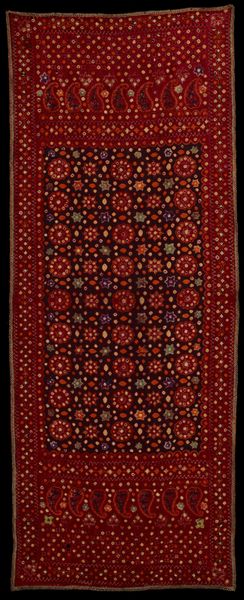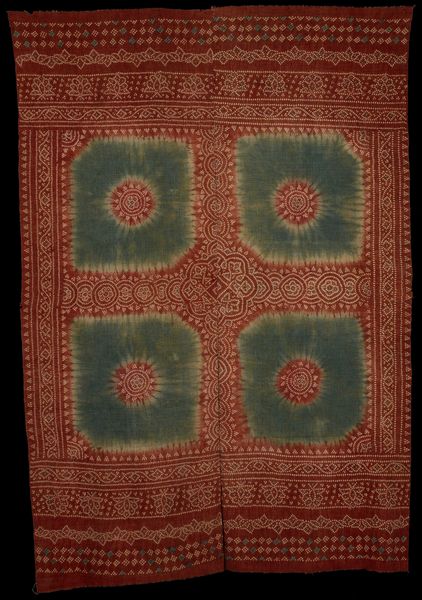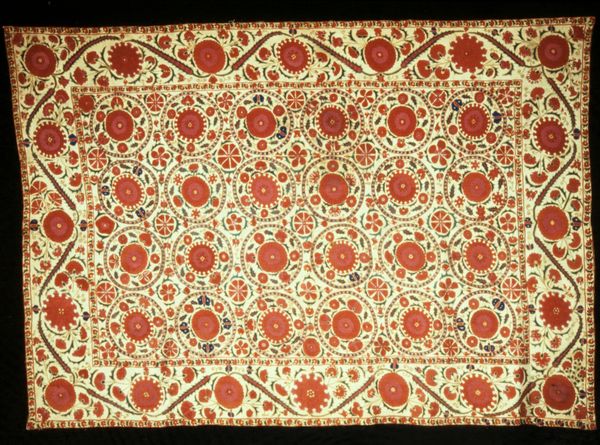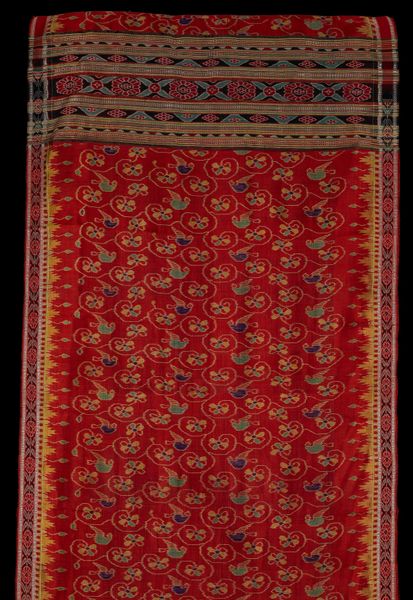
silk, weaving, textile
#
pattern heavy
#
natural stone pattern
#
naturalistic pattern
#
silk
#
weaving
#
textile
#
geometric pattern
#
abstract pattern
#
organic pattern
#
geometric
#
repetition of pattern
#
vertical pattern
#
pattern repetition
#
islamic-art
#
layered pattern
Dimensions: 100 x 80 1/2 in. (254 x 204.47 cm)
Copyright: Public Domain
Curator: Before us, we have a suzani, a stunning textile piece crafted in the late 19th to early 20th century, here at the Minneapolis Institute of Art. It's made with cotton and silk. Editor: My initial reaction is that it feels vibrant and intensely symbolic. The use of all those red shades gives it an immediate visual impact, and I’m intrigued by all of the circular motifs and the labor that went into stitching all of that! Curator: Suzanis like this one were typically made by Central Asian women, often as part of a bride's dowry. They are expressions of cultural identity, community, and feminine skill. The materials themselves, cotton and silk, are interesting when considering trade routes and access to resources in the region at the time. Editor: Exactly, it makes me think about the historical context and power structures present in that region. Were there restrictions on the type or amount of thread available? And how were women empowered or disempowered through this craft? What role did colonization and globalization play? Were these sometimes created in collectives as collaborative efforts? Curator: Undoubtedly! Production and distribution inform what the work looks like and the value assigned. Also the craftsmanship, the detailed embroidery using chain stitch and couching, demonstrates remarkable skill. This isn’t just decoration. The choice of the concentric circle pattern with radial forms suggests symbolic and material ties to both ancient solar symbols but also potential cart wheels. Editor: Absolutely, and within feminist theory, textiles and needlework have often been dismissed as "women's work." But pieces like this challenge that hierarchical view by showcasing not just the artistry involved but the storytelling inherent in the designs and dyes used. What stories did it aim to tell? How do those meanings translate and resonate with us today, especially as a diasporic object within an art institution like Mia? Curator: That is critical. These were originally intended for very different domestic spaces—they transform entirely when displaced to a gallery context. We might wonder about its original use and care. What was it exposed to and who enjoyed it and maintained it over time? And what’s so interesting about studying these material shifts, we often expose changing values associated with craft and textile work! Editor: It's a powerful reminder that art exists within a continuum, shaped by both individual artistry and larger social forces. Approaching "Suzani" with this awareness unlocks new perspectives on beauty, labor, and history. Curator: And appreciating the meticulousness of this construction, especially now, reminds me to be present in the spaces that I'm occupying. I will need to visit this textile again!
Comments
No comments
Be the first to comment and join the conversation on the ultimate creative platform.
